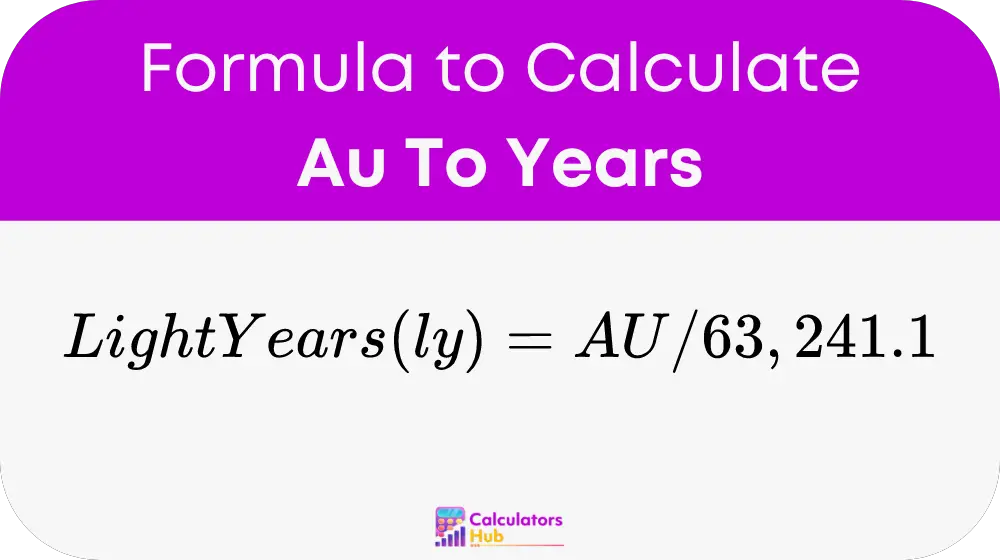The AU to Years Calculator is an innovative tool designed to convert astronomical units (AU) — the distance from the Earth to the Sun — into the time it would take for light to travel that distance in years. This calculator is crucial for astronomers, physicists, and space enthusiasts who need to understand the temporal scale of space travel and communications across vast distances.
Formula of Au To Years Calculator
Steps for Conversion:
Convert AU to Light Years:

Given that one light-year is the distance that light travels in one year, this formula directly equates astronomical units to time, reflecting the duration light would take to traverse the given distance.
Table of General Terms
To aid understanding, here is a table of key terms used in the AU to Years Calculator:
| Term | Definition |
|---|---|
| Astronomical Unit (AU) | The average distance between the Earth and the Sun, about 149.6 million kilometers. |
| Light Year (ly) | The distance that light travels in one year, approximately 9.461 trillion kilometers. |
| Conversion Ratio | The factor 63,241.1, representing how many AUs are in one light year. |
Example of Au To Years Calculator
For instance, if you are calculating the time it takes for light to travel 500,000 AU:
Light Years = 500,000 / 63,241.1 ≈ 7.905 years
This example demonstrates how the calculator is use to convert a vast astronomical distance into a temporal duration, making it easier to comprehend the time scales involved in cosmic distances.
Most Common FAQs
An Astronomical Unit is the standard measurement use to represent the distance between the Earth and the Sun, facilitating simpler descriptions of distances within our solar system.
By converting AU to years, scientists and the public can understand how long it would take for light or spacecraft to travel between celestial bodies, which is crucial for planning space missions and understanding the universe.
No, the calculator provides the duration for light travel, which is the fastest possible time. Spacecraft, which travel significantly slower than light, would take considerably longer to cover the same distance.